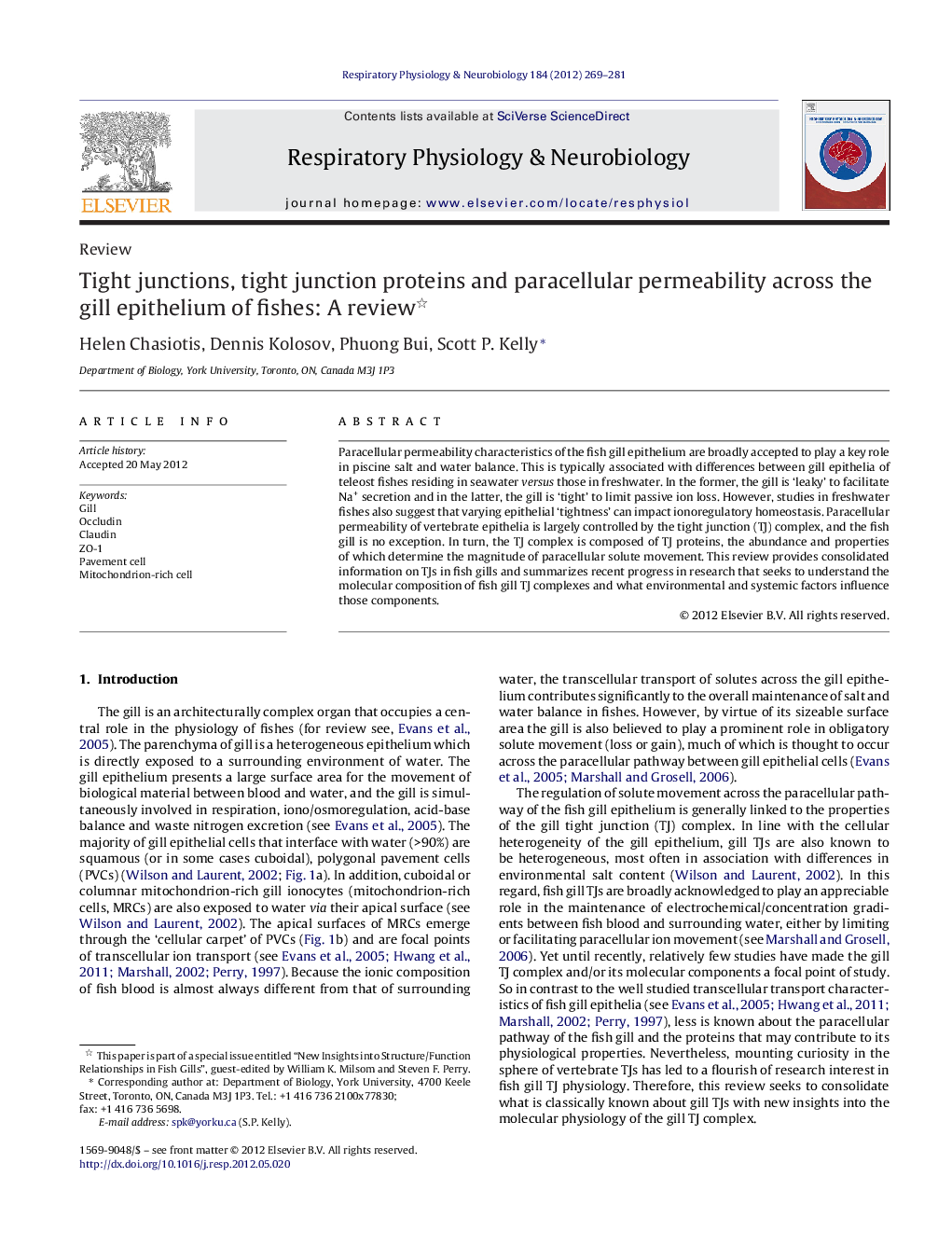| Article ID | Journal | Published Year | Pages | File Type |
|---|---|---|---|---|
| 2847361 | Respiratory Physiology & Neurobiology | 2012 | 13 Pages |
Paracellular permeability characteristics of the fish gill epithelium are broadly accepted to play a key role in piscine salt and water balance. This is typically associated with differences between gill epithelia of teleost fishes residing in seawater versus those in freshwater. In the former, the gill is ‘leaky’ to facilitate Na+ secretion and in the latter, the gill is ‘tight’ to limit passive ion loss. However, studies in freshwater fishes also suggest that varying epithelial ‘tightness’ can impact ionoregulatory homeostasis. Paracellular permeability of vertebrate epithelia is largely controlled by the tight junction (TJ) complex, and the fish gill is no exception. In turn, the TJ complex is composed of TJ proteins, the abundance and properties of which determine the magnitude of paracellular solute movement. This review provides consolidated information on TJs in fish gills and summarizes recent progress in research that seeks to understand the molecular composition of fish gill TJ complexes and what environmental and systemic factors influence those components.
► Tight junctions (TJs) are found in the gills of all extant classes of fish. ► Fish gill TJ heterogeneity contributes to the maintenance of piscine salt and water balance. ► TJ proteins such as occludin, claudins and ZO-1 are found in the fish gill epithelium. ► Fish gills contain at least 32 claudins. ► TJ proteins alter in association with changes in surrogate gill epithelium permeability.
